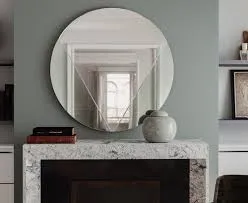

Transparent mirror glass, often referred to as one-way mirror or reflective glass, has become an essential element in various architectural and design applications. This innovative material serves dual purposes it functions as a mirror on one side while allowing visibility through the other side under specific lighting conditions. The unique properties of transparent mirror glass offer numerous advantages in modern design and practical applications.
One of the most compelling uses of transparent mirror glass is in the realm of security and surveillance. It is commonly utilized in police interrogation rooms, allowing law enforcement professionals to observe suspects without being seen. This provides a strategic advantage in gathering information and establishing rapport, as the interviewees remain unaware of the watchful eyes behind the glass. Similarly, this technology is employed in retail environments, where store owners can monitor customer behavior without intruding on their shopping experience, thereby enhancing loss prevention strategies.
In addition to its practical applications, transparent mirror glass adds a contemporary aesthetic appeal to architectural designs. It is often used in modern buildings, particularly in offices and residential spaces. The glass allows natural light to flow through while maintaining privacy, making it perfect for conference rooms, bathrooms, and dressing areas. With its sleek and sophisticated look, transparent mirror glass contributes to creating a sense of openness and tranquility in otherwise confined spaces.

Moreover, this material is frequently used in smart homes and residential setups. The integration of transparent mirror glass with advanced technology enables functions like displaying information while retaining its reflective properties. For instance, smart mirrors can show weather updates, calendar events, and news headlines, enhancing the user experience without compromising style.
As the demand for innovative solutions continues, transparent mirror glass is likely to evolve further, incorporating additional features such as energy efficiency and advanced security measures. Its versatility makes it an exciting option for architects, designers, and homeowners alike as they seek to balance functionality with aesthetic appeal.
In conclusion, transparent mirror glass stands at the intersection of functionality and design. Its unique properties allow for creative applications that enhance privacy, security, and aesthetics in a variety of settings. Whether in a retail space, an interrogation room, or a modern home, this dual-purpose material continues to transform how we interact with our surroundings.